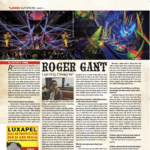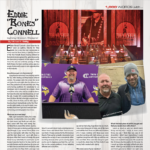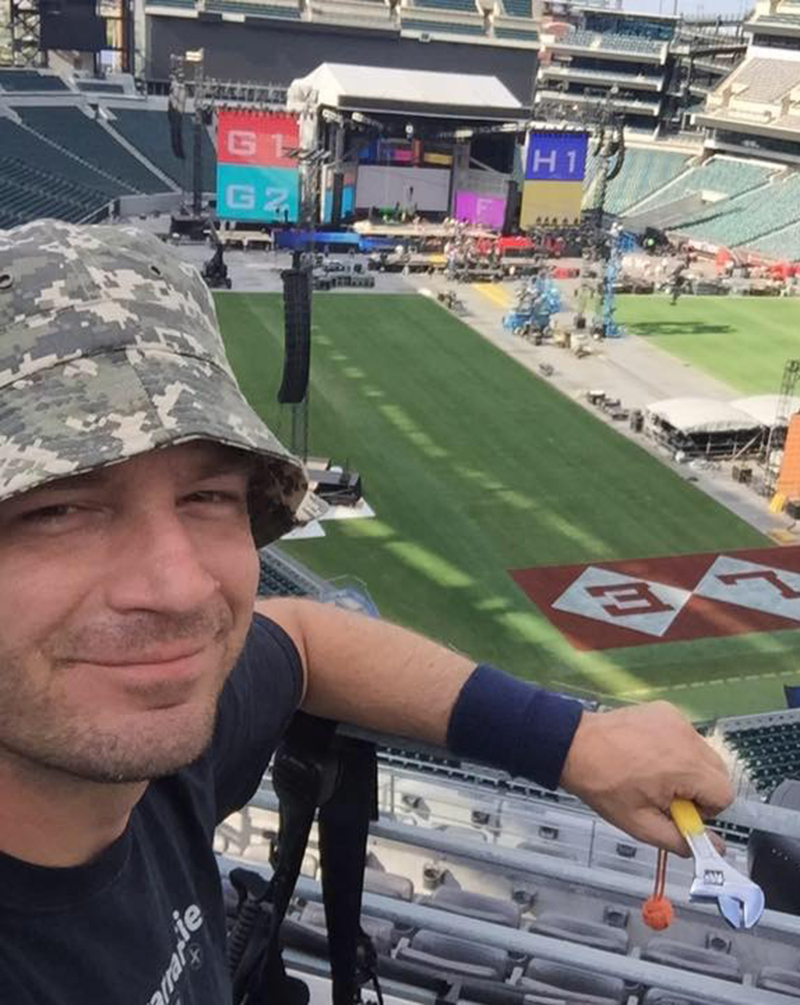
Jason Trowbridge is senior chief technician for PRG in Los Angeles, where he specializes in lighting systems for television and live event projects. He started out working in theater, first while studying at Upland High School, then at Cal Poly Pomona where he got a BA in theater.
In 1998, Trowbridge joined Vari-Lite Los Angeles, working primarily in TV on awards shows, game shows, and performance reality. He also did a tour with James Taylor and the occasional one-off concert. While working as chief lighting tech for the 2004 Olympic Opening Ceremonies in Athens, VLPS was acquired by PRG. “We first got cricket shirts from VLPS-UK, and left wearing PRG polo shirts,” Trowbridge recalls. He has worked on the Olympic ceremonies in Salt Lake City, Athens, and Vancouver, as well as the Pan Am Games in Guadalajara, and the Special Olympics in Shanghai. Trowbridge is also the creator of the popular Facebook group, “Dimmer Beach Monthly.”
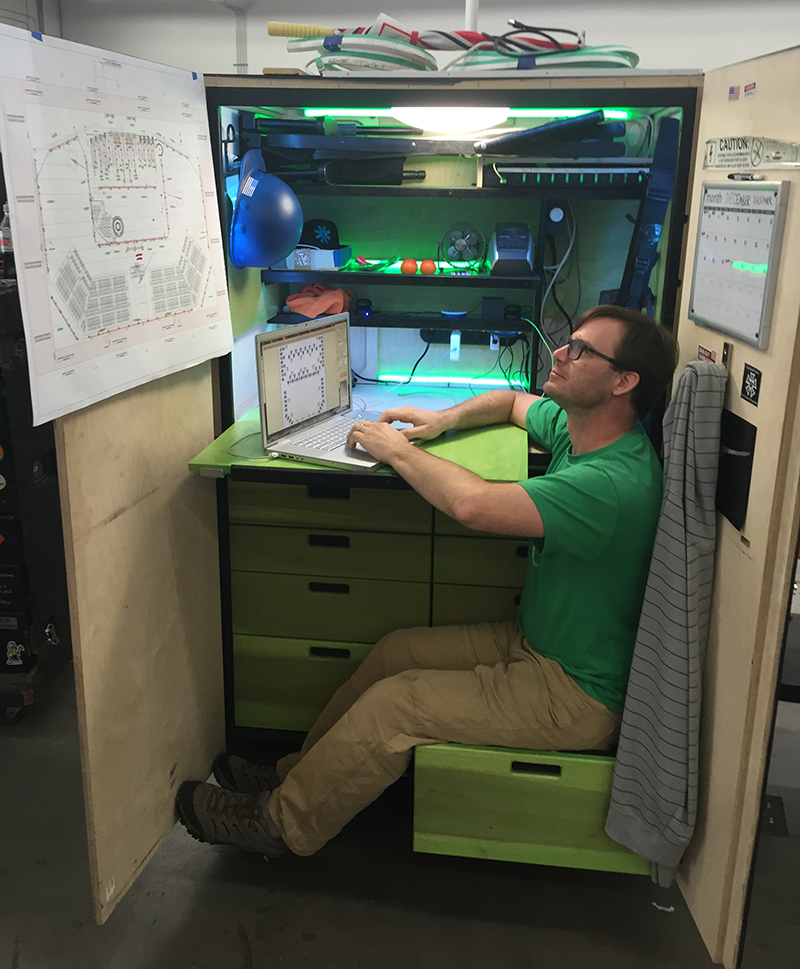
How did you get started in the entertainment technology industry?
I started in theater when I was in junior high school where I was a flyman. My original life plan was to become an engineer — electrical or optical — like my father’s path. In my senior year of high school, I got a job working in the theater. From there, I went to junior college and did a lot of stage managing, lighting design, and electrician work. I also worked on outside shows. I then transferred to Cal Poly Pomona as a theater major. Theater is a great discipline; it is one of the only places where you can work in the venue while you’re learning. You can come out of school with a resume.
Before I graduated, I got a job working at The Cerritos Center for the Performing Arts in LA. It’s an interesting space because the venue transforms from day to day. One day you walk in and it’s a theater with a proscenium and linesets, and then you load-out, and the next day it’s a big open flat floor, concert venue with truss. It was a good place to get a lot of different experiences with a lot of different acts.
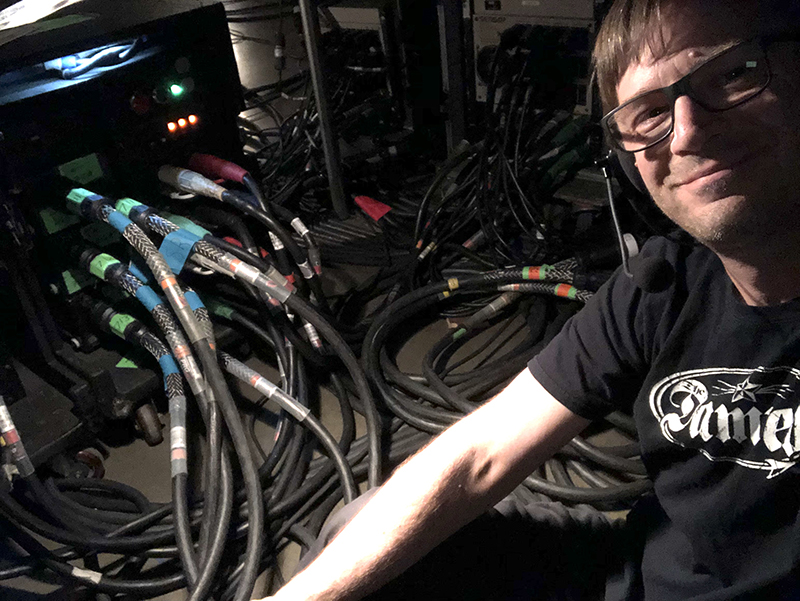
When did you make the transition from theater into television?
At Cerritos, and other gigs around, I worked alongside the Vari-Lite guys, so I had friends there who contacted me and it seemed like a good move so I went to Vari-Lite. That was how I made my first venture into television work. There I did a lot of teching; I was a tech on the Grammys and on all the other award shows before I moved up to be crew chief on those large-scale shows. My first big crew chief gig was a Cher HBO special. That was my first big multi-truck TV show and we brought in a big audience package that filled the space. That was a stressful show, but in the end it was nominated for an Emmy.
What’s an important skill to do your job?
I think it’s really communications. Because I have to interact with so many different people: designers, board operators, my own technicians, all the other crews and stagehands. I often have a couple thousand moving lights and there’s a couple of thousand questions that need answers to get the show in. So I have to distribute that information effectively; without any extrapolation or transposition. You need to communicate information in a clear and easy to understand way — a picture; a drawing; whatever it takes to let the team go off and do something autonomously.
What do you consider one or two milestones in your career?
Definitely, the 2004 Opening Olympics ceremony in Athens. That was just a huge milestone for me personally, and it was such a historic moment. It was just great, for me and other guys that worked on it, to be there; the whole Olympic experience is almost overwhelming. I did the ceremonies in Salt Lake City prior to that, but just to be in Athens and in that environment was just really a great personal moment.
Also, in 1999, when I was crew chief for the Country Music Awards. I’ve been doing that show consecutively every year since and I’m really proud of my work on the CMAs, I think of it as my show. I’ve also done the Grammys since 2009 as a Crew Chief, but I took a year off to do a Super Bowl Halftime Show, an Olympics, and have a child. Sometimes things get in the way, as they should.
What do you enjoy about your work?
That the overall career is a progression. I started putting in line sets in a little hemp house and clipping that dog clip to the back of Peter Pan so he could fly around in seventh grade, and this week I just did the Emmy Awards, where another show I was the crew chief on, Rent: Live and won the lighting Emmy. That was great; we worked really hard on Rent: Live.
What do you like least about your job?
I would say sometimes the hours. Sometimes we do 8 a.m.-to-2 a.m. or longer. Sometimes the hours are good; sometimes they’re bad; sometimes they’re really bad. I am lucky, though, because a lot of my work is in L.A., where I live, so the hours may be long, but at the end, it’s good to be able to go home.
Who have some of your mentors been?
Bill Cox, who ran the theater at Upland High School. He’s been a really good mentor for a lot of people. For example, on the Emmys, I was doing the lighting, and the sound guy went to high school with me. Back then he was the sound guy and I was the lighting guy — 30 years ago. Another mentor was my college lighting professor, William H. Morse. He was really impactful on the design process and making sure that it was a collaborative process; he gave me freedom to do a lot of what I wanted to do.
What has surprised you most about your career path?
I never expected — or planned on — doing television. Honestly, I always thought I’d be a theater guy. I thought I was going to be a designer or a house guy and run a theater.
You’re also known for “Dimmer Beach Monthly.” How did that come about?
I started “Dimmer Beach Monthly” as a joke, honestly. I ran some data cables on top of a rack really nicely and a couple of the stagehands had some messy feeder cable running next to my rack. I off-handedly made a joke saying, “Hey, unless you want to be on the cover of Dimmer Beach Monthly, you’re going to have to do it better than that.” It became a running joke. People started sending me pictures of their cable runs, all nice and flat. So, I started a Facebook page called “Dimmer Beach Monthly,” and now there’s almost 13,000 followers from several countries and continents; it’s a universal thing that everybody runs into. I take a lot of pride — and responsibility — in the level of work that I and my crew does. The Facebook page is an outlet to be able to show that off; for mine and for other people that take the same pride in their craft.
Michael S. Eddy, editor-in-chief of Stage Directions, is a frequent contributor to PLSN.
